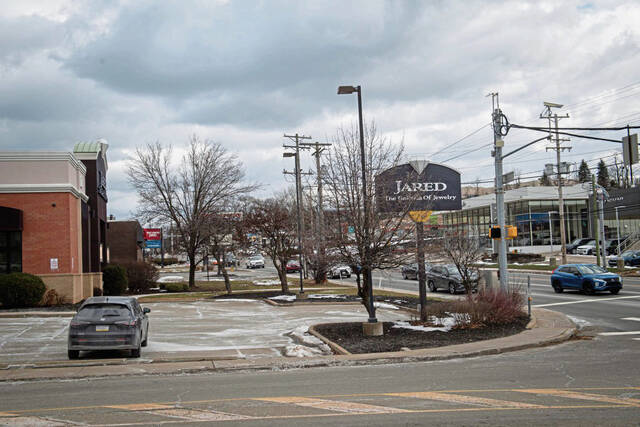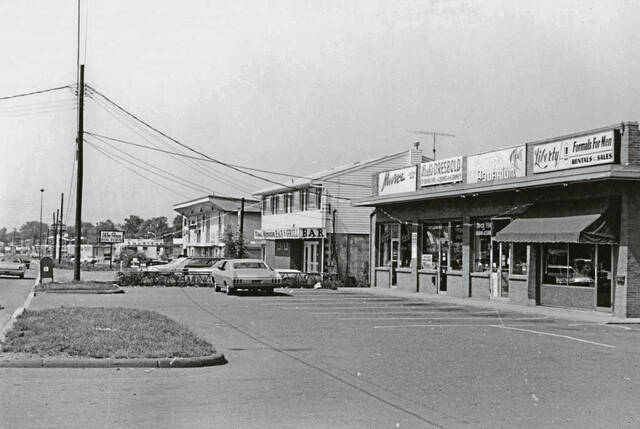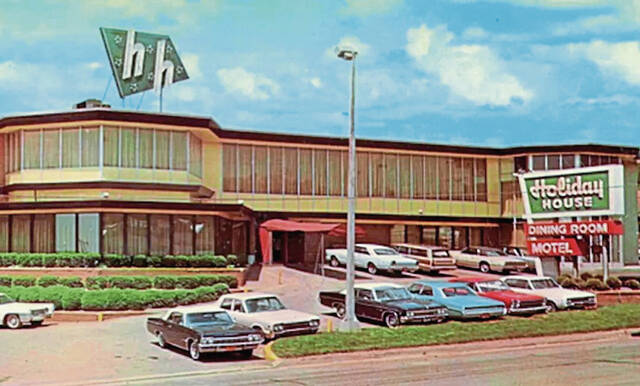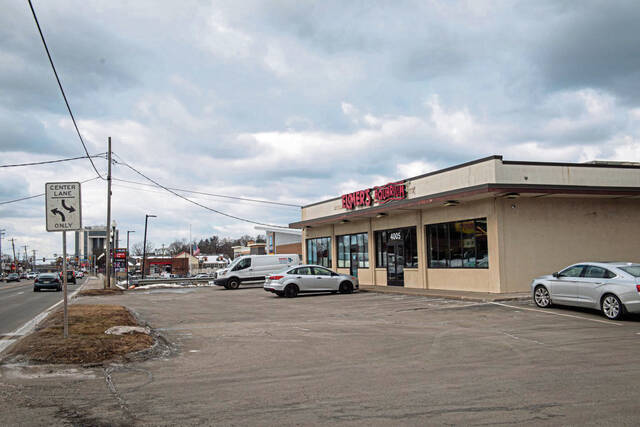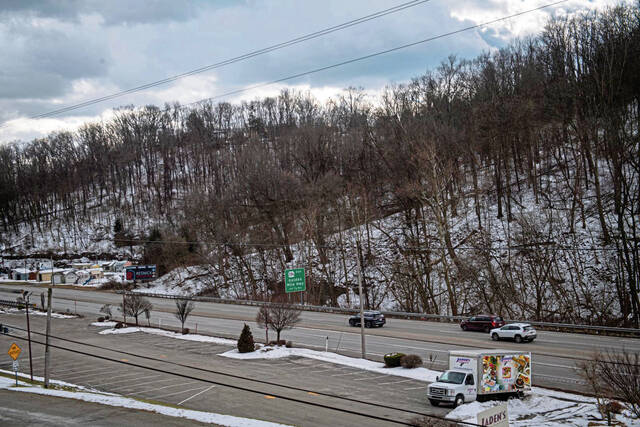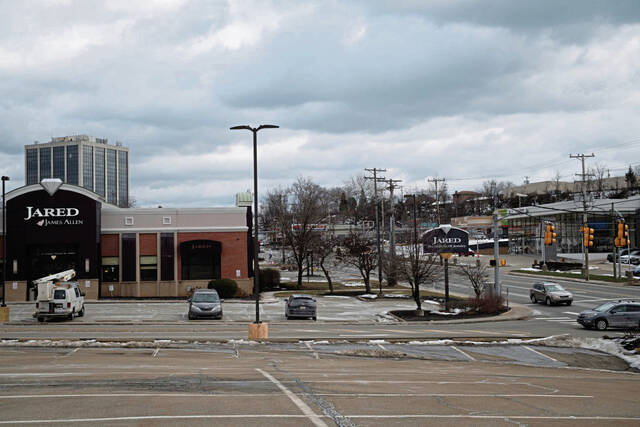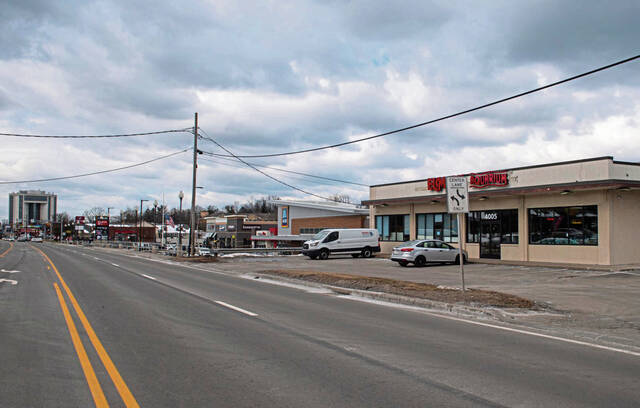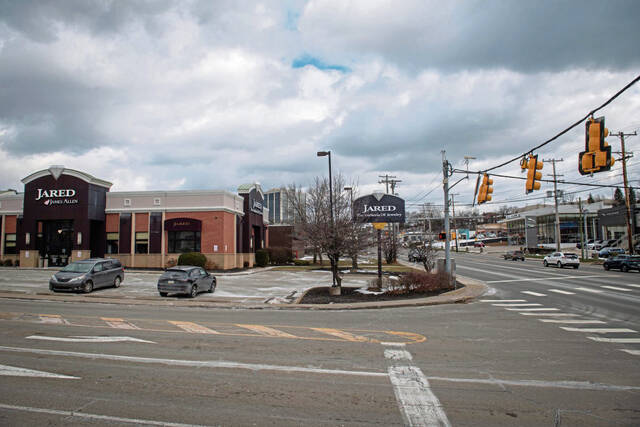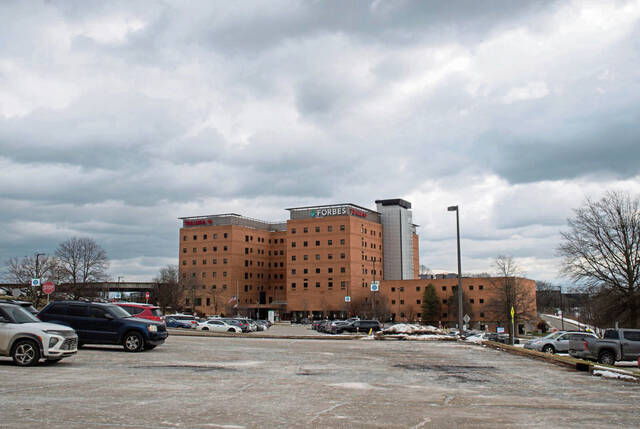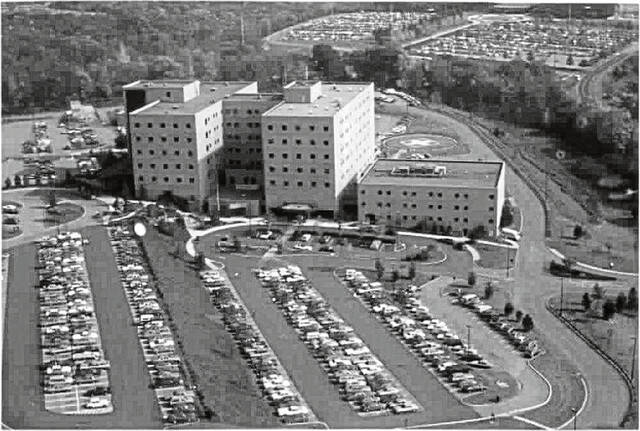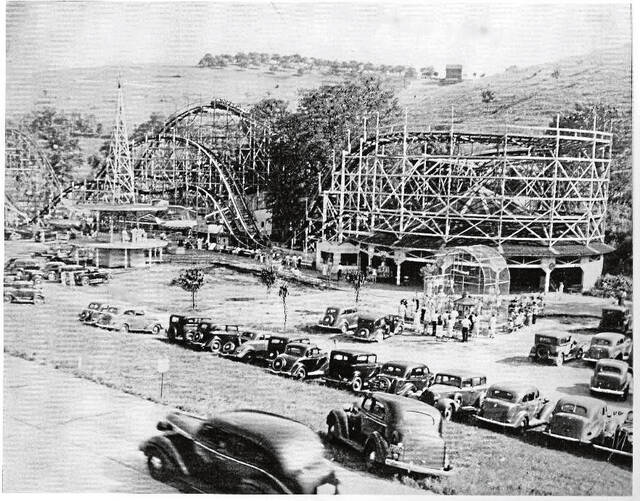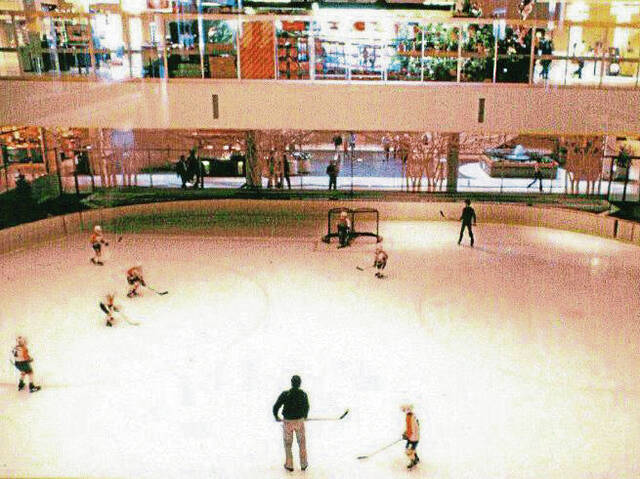From farmland to Miracle Mile: Monroeville poised for change as it marks 75 years
N. Michael Marie had a front-row seat as Monroeville grew from a farming community into the hub of activity that it is today.
Marie, 72, is the owner of Nick Marie’s Esta Esta, the restaurant his parents, Nick and Helen Marie, opened in 1955. Marie grew up above the space known for being the first fine-dining establishment in the area to serve “surf and turf” (lobster and beef filet). He could look out his window and watch the community evolve as he grew older.
“When they started the restaurant, Denny’s used to be Hahn Furniture, the Dari Delite was across the street and Jonnet Plaza was all bare ground,” Marie said. “The Miracle Mile was still being built.”
This year marks the restaurant’s 70th anniversary, as well as Monroeville’s 75th anniversary. The community that was once dotted with farms is now home to about 28,000 residents and is a shopping mecca of the eastern Pittsburgh suburbs.
‘A phenomenon of the automobile’
In 1807, workers completed construction on the Northern Turnpike linking Philadelphia to Pittsburgh, with a small village 13 miles east of the city serving as its first stagecoach stop on the way to Philly.
A few years later, farmer Joel Monroe began selling off lots along the road, laying the foundation for the town that eventually would bear his name. Before it would become Monroeville, however, it would join the neighboring young villages of Turtle Creek, Wilmerding, Wall and Pitcairn to form Patton Township in 1849, according to Monroeville Historical Society records.
By the late 1800s, Patton was among a large number of Western Pennsylvania towns undergoing a coal boom, with fresh railroad spurs connecting to Pittsburgh to feed the steel industry’s voracious appetite for fuel.
By the 1920s, the coal boom had mostly faded, but the Northern Turnpike in 1924 became the William Penn Highway, the first paved road to Pittsburgh. In 1926 a group of businessmen built the Burke Glen Amusement Park near present-day Elliott Road.
Through the 1930s and ’40s, Monroeville was still a sparsely populated community mostly filled with farms. Three nights a week, the Farmer’s Auction Barn drew livestock buyers from all over the region. Cattle farmers drove their herds over the remnants of the “Northern Pike” to stockyards that once stood in Pittsburgh’s East Liberty neighborhood.
But as more and more paved roads began to crisscross the town — which officially became its own entity, Monroeville, in 1950 — it began to develop a reputation as a bedroom community, where many of the residents commuted to work using one of several highways leading in and out of the municipality.
It led a member of the planning commission to once remark that Monroeville’s birth and growth was “a phenomenon of the automobile.”
By 1955, schools in Monroeville and neighboring Pitcairn merged to form the Monroeville-Pitcairn Joint School District, which lasted until 1960, when it became the Gateway Union School District. The name was shortened to Gateway in 1965. The district now has about 3,400 students.
Today, Monroeville is just under 20 square miles. The population has hovered around the 28,000 mark since 2010, according to 2024 census estimates.
Big names
Frank Sinatra. The Three Stooges. Dean Martin. The Everly Brothers.
Those entertainers were the Taylor Swifts and Kenny Chesneys of their era, and at one time in Monroeville’s history, residents didn’t even have to travel to Pittsburgh to see them. They could simply come up to the Holiday House on Route 22, a supper club and motel that opened in 1955.
While it developed a reputation as a mobster hangout, it was a popular destination for people across the Pittsburgh region.
“At the time, there really wasn’t a place like that in Pittsburgh,” said Monroeville native Scott Philpot, 66. “Al Martino, Jimmy Dean, so many famous acts came there.”
In fact, Philpot got a chance to meet Dean, the country singer who later became known for his brand of sausages.
Philpot said his father golfed at Alcoma Country Club (today’s 3 Lakes Golf Course in Penn Hills), “and when Holiday House acts would come to town, a lot of times they’d take them out to Alcoma to golf. I met Jimmy Dean on the course and shook his hand as he was playing through.”
Vince Ornato, 66, of Pittsburgh’s North Side said he’ll never forget sitting in the front row at the Holiday House with a large group of couples and seeing The Temptations when he was 19.
“To see those five guys on a small stage in a supper club, it was just unbelievable,” he said. “You’d have thought the roof was going to blow off the place. I saw them two more times there, I saw Ray Charles, Don McLean, Nancy Wilson, you name it.
“We all grew up listening to records at our parents’ houses, and you could see a lot of those people at the Holiday House.”
The venue closed in the late 1980s and was demolished in 1989, making way for the Holiday Centre shopping plaza.
Big changes
In addition to marking three-quarters of a century since its birth, Monroeville is also about to undergo one of its biggest-ever commercial changes. The Monroeville Mall was recently acquired by Walmart, with plans to redevelop the property that has served as the town’s commercial anchor since it was built in the late 1960s.
“The mall came in when I was a senior in high school, and big box stores started following behind it,” Marie said. “Everyone was happy about it coming to town.”
The mall opened in 1969. Margaret Davies, 88, of Churchill can remember walking in for the first time, through the former Gimbels department store.
“You’d come through Gimbels, and then there was this lovely ice skating rink,” Davies said. “My sons and I used to take lessons there on Saturday mornings, and the local boys’ hockey teams would be there at the crack of dawn, practicing before school.”
Davies remembers eating at the popular Brown Derby restaurant, and making long trips around the parking lot.
“You’d drive forever and ever looking for a space,” she said. “It would take ages to find a spot. It’s hard to believe that now.”
But before the mall arrived, it was the Miracle Mile. Built in the mid-1950s, it served as the focus of Monroeville commerce.
“That was the epicenter of the town for a lot of years,” Philpot said. “Businesses initially grew up around that. It was like our Main Street, and it was packed all the time.”
By the time Nick Marie’s father purchased the former Beatty’s Restaurant in 1955 and turned it into the Esta Esta, Route 22 had been expanded into a four-lane highway. The Pennsylvania Turnpike had made its way to Monroeville in 1950.
“When Route 22 and the turnpike came through during about a 10- to 15-year span, that was when Monroeville really exploded,” Philpot said. “I grew up going to Isaly’s, Murphy’s Meats, the butcher shop, Woolworth’s and S.S. Kresge.”
In addition to seeing the same commercial slowdown as nearly every other American mall in the age of online shopping, the Monroeville Mall also has had a recent history of violent incidents, including fights and shootings.
Walmart officials have not yet filed any plans with Monroeville regarding the future of the mall property. But it wouldn’t surprise the Philpots if more national chains arrived.
“Other than the Miracle Mile, I don’t think we have a real identity here,” said Philpot’s wife, Nancy, spokesperson for the town’s historical society. “People pass through Monroeville. They don’t come here anymore.”
‘We don’t want to end up like Monroeville’
“We don’t want to end up like Monroeville” has been a familiar refrain over the years at planning commission and council meetings throughout Pittsburgh’s east suburbs, particularly in the context of overdevelopment and suburban sprawl.
Marie can recall when the Garden City neighborhood started building houses in 1958.
“That predated a lot of the bigger development,” he said. “When Westinghouse was out here and in its heyday, Monroeville was booming. Just from them, you had 3,000 employees, their spouses, an average of 2.5 kids in a household. I graduated in 1970 from Gateway with nearly 700 kids.”
Heavy commercial development along the Route 22 business corridor, bolstered by the addition of the mall in 1969, continued in smaller layers as it moved farther north and south of the highway, with strip malls and mini-shopping plazas dotting the landscape.
“I’ve been here 30 years now,” Nancy Philpot said. “When we first came here, this town was dictated by a certain few people, who definitely catered to the developers. It was one development after another for a long time. We do have nine parks, but we really don’t have that much green space here.”
In an era of large department store chains and glass-and-steel-box buildings, it’s unlikely that a structure with the funky architecture of the Holiday House could even be built in accordance with Monroeville’s current development requirements.
Today, Esta Esta is one of the only businesses that remain from Monroeville’s early days. Just up the street, another business that would have marked its 70th anniversary this year — Ralph’s Army Surplus — closed for good at the end of 2024.
“I think they got a little out of control in the ’80s and ’90s, when they were building a lot of these cookie-cutter places,” Philpot said. “Today, you have to put sidewalks in, they have nice light poles like along Miracle Mile. But it was kind of willy-nilly for a while.”
He said he’d like to see fewer national chains and more local businesses in Monroeville.
“The convention center is great to bring people in, and those people go out and spend money getting something to eat. But they’re eating at all the same chain restaurants they have where they live,” he said. “(Monroeville) got so involved bringing in these big box stores that we lost a lot of our identity. Now we just look like the McKnight Road corridor.”
Patrick Varine is a TribLive reporter covering Delmont, Export and Murrysville. He is a Western Pennsylvania native and joined the Trib in 2010 after working as a reporter and editor with the former Dover Post Co. in Delaware. He can be reached at pvarine@triblive.com.
Remove the ads from your TribLIVE reading experience but still support the journalists who create the content with TribLIVE Ad-Free.



